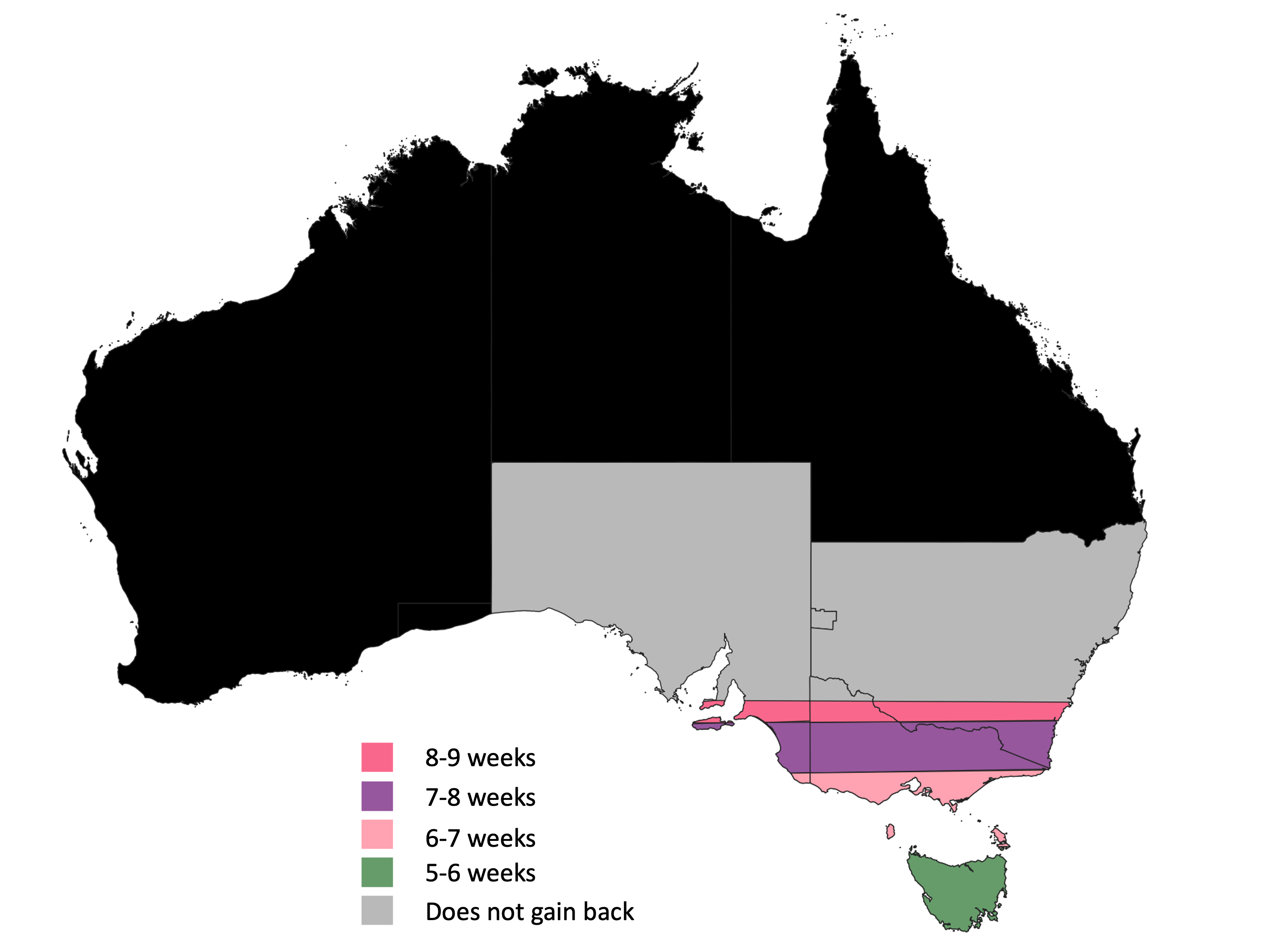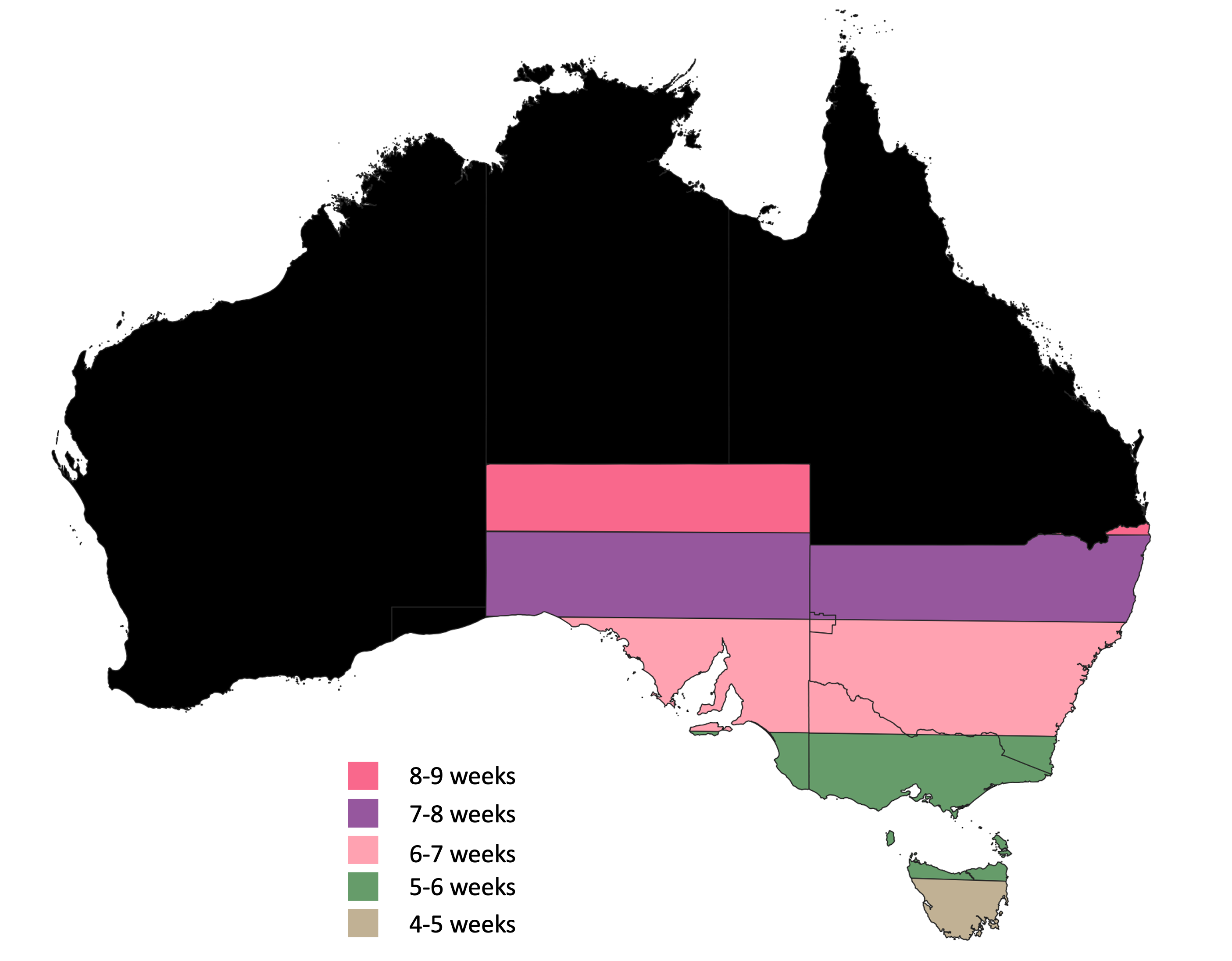How long does it take to gain back the lost hour from daylight saving?
Daylight saving is happening tomorrow. As the name suggests, 'daylight saving' has the purpose of trying to maximise the amount of daylight during normal waking hours.
Historically, World War 1 saw the use of Daylight Saving Time (DST) by Australia, Germany, and the United States, to conserve resources by decreasing artificial light use during waking hours. This became official in 1917, with all states adopting DST time. Today, the Australian states that observe DST are NSW, the ACT, SA, Vic and Tas whilst the NT, WA and QLD do not observe DST. So what does maximising daylight hours really mean?
Typically, people are up at, or by, 7am during your normal working week, and they'll be finishing up their work by, say, 5pm. During this entire duration, your average person will always be awake while the sun is up.

Image: Don't forget to set your clocks forward one hour on Sunday October 1st.
Fast forward to summer, and now the sun is rising at 5am and setting by say, 8pm. During your normal working week, your average person will not be awake at 5am. So how can one maximise daylight hours when your average person is awake by say, 6am in summer, and have the sun still up while you’re awake in the evening?
To see how useful DST really is, we can see how long it takes for the morning hour of lost sunlight to be ‘gained back’. When we set our clocks forward an hour for the summer, we lose an entire block of sunlight in the morning. For example, in Melbourne, the sun will rise at 5:58am the day before daylight saving, then 6:56am the day of. The next time the sun will rise as early as 5:58am is on November 17th, a whole 48 days later (6 weeks and 6 days).
Take a look at the following map to see how long it takes you to gain back that lost hour of light in the morning.

Figure 1: The amount of time taken to gain back the lost hour of morning daylight following DST (2am on October 1st). Source: NOAA Solar Calculator.
If alarms haven’t gone off in your head yet, here’s a question: Why do most areas of New South Wales and South Australia and a small chunk of Victoria not gain back that morning hour?
The simple answer is this, the timing of DST. The earlier you set your clocks back, the more sunlight you’ll gain back in the morning. The later you set your clocks back, the more sunlight you’ll gain in the evening.
Turns out, America has thought this through, and have broadly picked the right time to implement DST for saving morning hours. Brian Brettschneider, an Alaskan climatologist, originally created a map like this for the U.S, found here.
If Australia were to adopt the same daylight savings timing as the U.S, the map from Figure 1 may look something more like this:

Figure 2: The amount of time taken to gain back the lost hour of morning daylight following DST, if using dates that the United States DST regions uses (equivalent to if DST fell on about September 10th). Source: NOAA Solar Calculator.
Don't forget to set your clocks forward one hour for tomorrow, Sunday October 1st, and be prepared for a much later sunset!